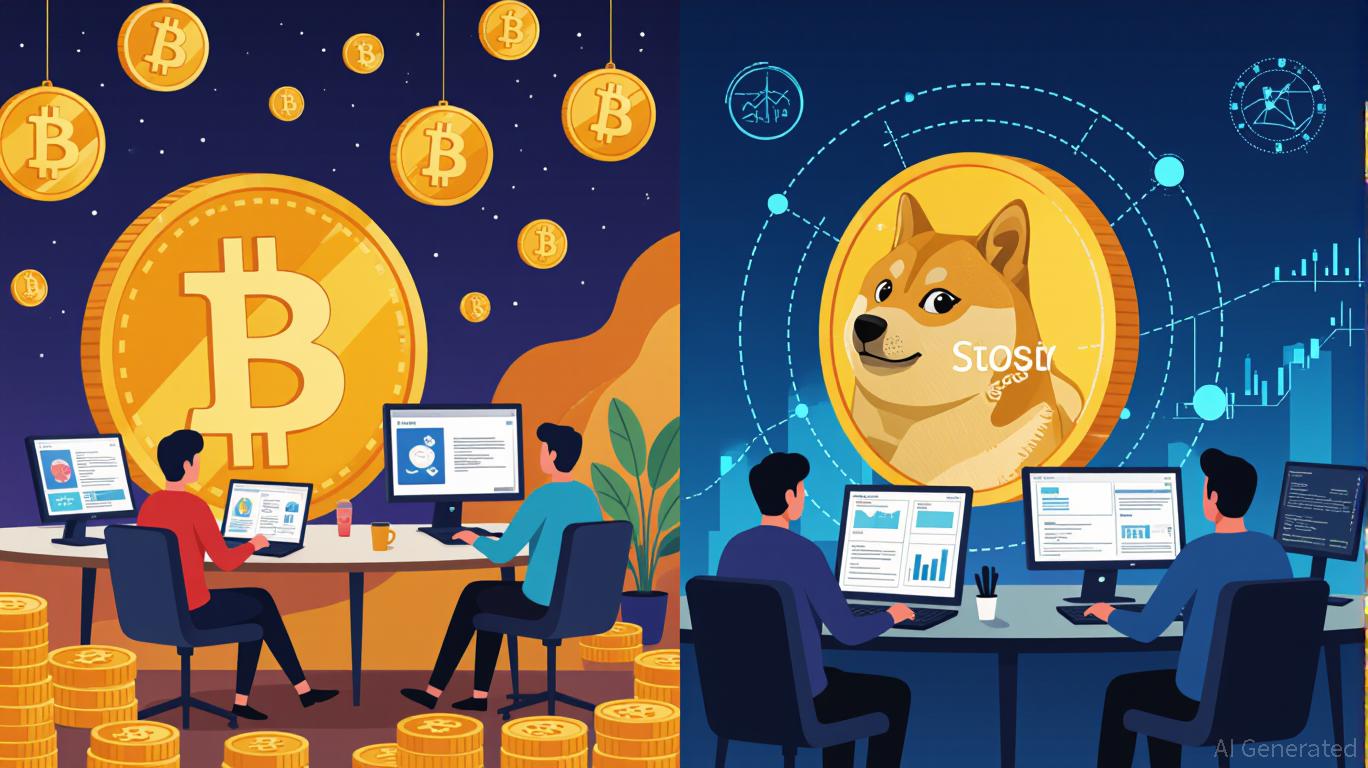
The cryptocurrency market in 2025 is no longer dominated by speculative hype alone. Investors are increasingly prioritizing projects with tangible utility, robust technological foundations, and institutional credibility. Two names stand out in this evolving landscape: Dogecoin (DOGE) and Solana (SOL). While both have captured headlines, their paths to long-term value diverge sharply. This analysis compares their real-world utility, technological innovation, and institutional adoption to determine which offers a more credible path for high-net-worth growth.
Dogecoin: The Meme Coin with Real-World Legs
Dogecoin’s origins as a joke have never defined its trajectory. By 2025, DOGE has evolved into a fast, low-cost payment network with a growing ecosystem of use cases. Retailers like AMC Theatres and Newegg now accept DOGE for tickets and electronics, while platforms like Twitch and Reddit enable instant tipping in the coin. Its proof-of-work architecture ensures rapid confirmations (under one minute) and fees under a cent, making it ideal for microtransactions and cross-border remittances.
Institutional interest has also surged. Grayscale and Bitwise are pushing for a DOGE ETF, with a 75% approval probability in prediction markets. BitOrigin’s $500 million treasury allocation and Tesla’s pilot program for DOGE-based software upgrades further validate its utility. Technically, DOGE’s descending triangle pattern and whale accumulation suggest a potential 40% price move if the triangle breaks.
However, DOGE’s limitations are clear. It lacks native smart contracts and relies on cross-chain bridges (e.g., wDOGE) to access DeFi. Its value proposition remains tied to social sentiment and retail speculation, with no fundamental upgrades to its protocol in 2025. While its real-world adoption is growing, it’s still a niche player in a market demanding scalability and innovation.
Solana: The High-Performance Blockchain with Institutional Momentum
Solana’s rise in 2025 is a story of technological execution and institutional alignment. With a price of $178, SOL has become a cornerstone of the multi-chain DeFi ecosystem, thanks to innovations like 1inch’s cross-chain swaps, which enable trustless trading between Solana and EVM-compatible tokens. The chain’s Alpenglow upgrade reduced block finality to 150 milliseconds, making it one of the fastest blockchains for institutional-grade transactions.
Institutional adoption is accelerating. Visa’s stablecoin platform has recognized Solana’s settlement capabilities, while 7,625 new developers joined its ecosystem in 2024—83% year-over-year growth. Solana’s on-chain activity hit 116.4 million active wallets in June 2025, surpassing all L1/L2 chains combined. Its token-burning mechanism, fueled by $271 million in Q2 2025 revenue, has tightened supply and boosted investor confidence.
Beyond DeFi, Solana is expanding into real-world asset tokenization, with on-chain equity values jumping from $15 million to $48 million in two weeks. This positions it as a settlement layer for traditional finance, a critical edge over DOGE. Regulatory progress is also favorable: U.S. ETF proposals include SOL, and the SEC’s non-security designation for meme coins has cleared the path for broader institutional custody.
Comparative Analysis: Utility, Innovation, and Institutional Traction
MetricDogecoin (DOGE)Solana (SOL)Real-World UtilityMicrotransactions, retail, tipping, charityDeFi, DPINs, real-world asset tokenizationTechnological DepthLitecoin-based, no native smart contractsHigh-speed consensus, cross-chain swapsInstitutional AdoptionETF filings, corporate partnershipsDeveloper growth, tokenization, ETFsRegulatory ClaritySEC non-security designationMiCA compliance, custody-friendlyMarket SentimentHype-driven, social media influenceInstitutional-grade, developer-led growth
Investment Thesis: Which is the Better Bet?
For high-net-worth investors, Solana emerges as the more credible long-term play. Its technological superiority, institutional adoption, and expanding utility in DeFi and real-world assets create a compounding effect. The chain’s ability to attract developers and enterprises—evidenced by 300+ decentralized apps and partnerships with Visa—positions it as a foundational infrastructure layer.
Dogecoin, while benefiting from ETF speculation and retail adoption, remains a high-risk, high-reward asset. Its value is heavily dependent on social sentiment and macroeconomic factors (e.g., meme coin seasons). For conservative investors, DOGE’s potential is capped by its lack of protocol-level innovation.
Conclusion: Strategic Allocation in a Shifting Market
The crypto landscape in 2025 rewards projects that bridge utility and scalability. Solana’s institutional-grade infrastructure and technological agility make it a stronger candidate for sustained growth, particularly for investors seeking exposure to blockchain’s next phase. Dogecoin, meanwhile, offers speculative upside but lacks the depth to outperform in a matured market.
For a balanced portfolio, consider allocating a smaller portion to DOGE for its social momentum and ETF potential, while prioritizing SOL for its institutional traction and ecosystem expansion. As the SEC’s regulatory clarity and market dynamics evolve, Solana’s trajectory appears more aligned with the future of decentralized finance.
